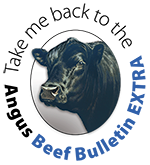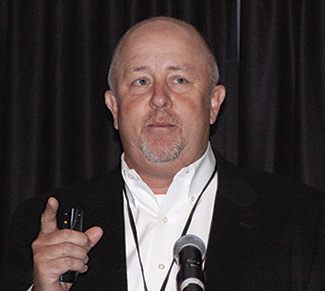What I Learned From Pigs
Failing to respond to important industry indicators is an example beef producers don’t want to follow.
 by Lindsay King, assistant editor
by Lindsay King, assistant editor
LOVELAND, Colo., June 22, 2018 — He was 15 years old and thriving in the hog seedstock industry, with “almost no idea” what he was doing. Marty Ropp from Allied Genetic Resources shared the dreadful timeline that led the hog industry down a path of destruction. An industry once boasting 650,000 operations in 1974 today has only 50,000.
“I am just here to tell the story. Any resemblance to current status or circumstances in the beef genetics business is not coincidental,” Ropp said. “It is far less painful to learn from the mistakes of others than to repeat them.”

“I am just here to tell the story. Any resemblance to current status or circumstances in the beef genetics business is not coincidental,” Marty Ropp said. “It is far less painful to learn from the mistakes of others than to repeat them.”
Almost every hog producer Ropp knew in 1974 is now out of business. Some were lucky to only lose their business. Others lost their entire farm because of the decisions made collectively by the industry Ropp outlined.
“The independent purebred seedstock operation dominated the swine genetics business since the turn of the last century, and it was large, thriving and profitable,” Ropp said. “The industry failed to prepare for the future and understand what the market was doing.”
With a straight face, Ropp recounted how hog producers would simply talk about the issues plaguing the industry for several years. If the issue persisted, then they might act upon it.
“In 1974, there was little difference in market price for good and bad hogs,” Ropp said. “Crossbreeding was almost unheard of. Most producers were purists, and they raised the breeds they wanted instead of what customers were calling for.”
In 1974, customers were not demanding anything from hog producers except for hot carcasses. It was the business to be in if you wanted to pay off the farm. Improvement in the industry was at the bottom of the priority list.
“The best caretakers and marketers dominated the seedstock business,” Ropp said. “We wanted our hogs to look like theirs, so we got our genetics from them. We would have been better off figuring out how they fed them and their real birth dates instead of the dates they told us.”
Thousands of hogs used to crowd the Iowa State Fair. Now a few hundred show up every year. The turning point? 1984. Packers started asking for better and turning hogs away that did not meet their standards.
“Packers took over the pig genetics business,” Ropp said. “It started with the use of grids and expanded to actually marking the differences between pigs meeting the standards and those that did not. We thought that changed our lives, and we ran to meet the demand the packer asked us to.”
The move from dirt operations to confinement hog farms was a difficult transition to make. The industry had a history of devastating health issues perpetuated by their management techniques. Confinement amplified those pathogens.
“What I learned from all this is that we are a serious food business, first and foremost,” Ropp said. “We eat the cattle and hogs in this nation. Whoever is in charge of genetic improvement has to keep this in mind or else they are not doing their job.”
Without continuous improvement to genetics and profit, the business is not truly serious, Ropp said. He reiterated that science-based decisions and profit will always win over opinion and dogma.
“Don’t confuse what you want to do with what you need to do,” Ropp said. “To quote Steve McGuire, ‘not any one of us can be as foolish as all of us.’ It took a village to decide the customer did not matter in the hog industry and that it was a good idea to give pigs a haircut. You have to plan long-term for a large number of winners if you want this many producers at the 100th anniversary of BIF."
Editor’s Note: The articles used within this site represent a mixture of copyrights. If you would like to reprint or repost an article, you must first request permission of Angus Media by contacting the editor at 816-383-5200; 3201 Frederick Ave., Saint Joseph, MO 64506. Angus Media claims copyright to this web site as presented. We welcome educational venues and cattlemen to link to this site as a service to their audience.


